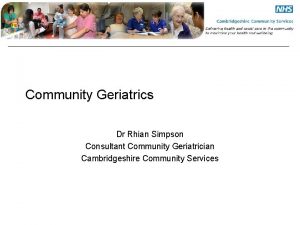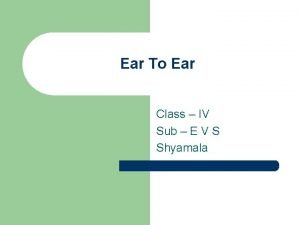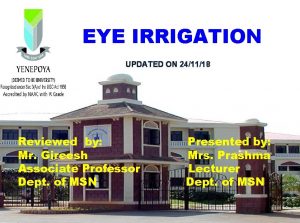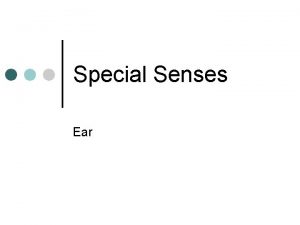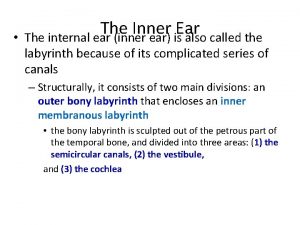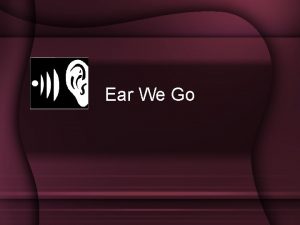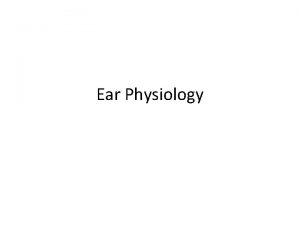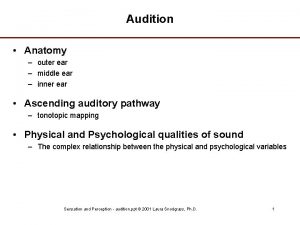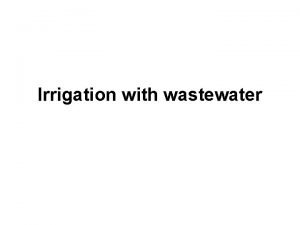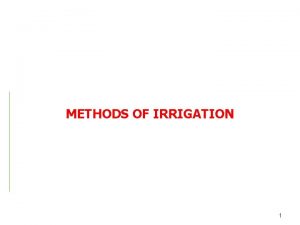EAR IRRIGATION Rhian Smith Community Health Nursing Clinic













- Slides: 13

EAR IRRIGATION Rhian Smith Community Health Nursing Clinic Skill Presentation

EQUIPMENT FOR IRRIGATION Irrigating Syringe Prescribed Irrigating Solution or Tap Water 2 Basins: 1 Round and 1 Curved Absorbent Pad or Towel Cotton Ball

PREPARATION FOR IRRIGATION Verify Physician’s Orders Hand Hygiene Gather Necessary Equipment Warm Irrigating Solution to Body Temperature Rational: Nausea and vertigo can occur if the irrigating solution is cold Note: If wax softening eardrops are prescribed, ensure that the client has instilled them several hours prior to procedure

ESSENTIAL INFORMATION Only perform ear irrigation if the tympanic membrane can be visualized. Debris has the potential to cover unseen perforations. Ensure intactness of the client’s tympanic membrane before beginning the irrigation. Do NOT use water to remove organic foreign bodies from the ear. Water can cause swelling of the objects. � Examples: � Insect � Bean

PROCEDURE 1. Common Procedure Initiation � ID client via name band, client statement of name and date of birth, provide privacy, explain procedure, acquire clean gloves 2. Place client in Fowler’s position. Place absorbent towel over client’s chest and shoulders

PROCEDURE CONTINUED 3. Place irrigation solution in round basin 4. Place curved basin under client’s ear to catch irrigating solution 5. Fill syringe with irrigating solution

PROCEDURE CONTINUED 6. Open and straighten client’s ear canal � Adults: Pull pinna up and back � Infants and Children: Pull pinna downward � Rational: Opens ear canal to allow solution to flow in

PROCEDURE CONTINUED 7. Hold irrigating syringe at entrance of ear canal without occluding meatus. � Rational: Fully entering the ear canal can cause impaction 8. Push plunger with flow of solution directed towards the top of the canal � Rational: canal Allows the flow to reach the entire length of the

PROCEDURE CONTINUED 9. Monitor return flow 10. Dry outside of the ear once the solution has stopped flowing 11. Return client to a comfortable position and place cotton ball in ear canal to absorb excess fluid. � Rational: Reduces risk of external otitis 12. Return equipment, remove gloves, perform hand hygiene and document results

OUTCOMES Expected: Removal of Cerumen Unexpected: Nausea and vertigo experienced by client during procedure. � To prevent future occurrence: � Ensure fluid is properly warmed prior to irrigation � Suggest use of wax-softening ear drops

APPLICATION TO THE HOME SETTING Title: Managing Earwax in Primary Care: Efficacy of Self Treatment using a Bulb Syringe Purpose: Compare effectiveness of in-office irrigation and at-home bulb syringe irrigation Ensure client is aware of proper at-home procedure previously discussed Results of Study: 41% of bulb syringe users received adequate removal of earwax � 51% of bulb syringe users did not require repeat irrigation � Less than 1% received trauma to the ear during the irrigation � If completed correctly at home ear irrigation can save time and money for the client

QUESTIONS?

REFERENCES Coppin, R. , Wicke, D. , & Little, P. (2008). Managing earwax in primary care: Efficacy of self-treatment using a bulb syringe. British Journal of General Practice, 58, 44 - 49. Smith, S. F. , Duell, D. J. , Martin, B. C. (2008) Clinical nursing skills: Basic to advanced skills (7 th ed. ). New Jersey: Pearson Education, Inc. All images retrieved using Goggle search
 Rhian simpson
Rhian simpson Animals whose ears can be seen
Animals whose ears can be seen Which animal ears like fans
Which animal ears like fans Downtown community health clinic
Downtown community health clinic Eye irrigation
Eye irrigation 20 point programme images
20 point programme images Purpose of nursing process
Purpose of nursing process Nanda nursing care plan examples
Nanda nursing care plan examples Roles of community health nursing
Roles of community health nursing Principles of chn
Principles of chn Define nursing process
Define nursing process Nursing care plan evaluation examples
Nursing care plan evaluation examples Example of community health nursing diagnosis statement
Example of community health nursing diagnosis statement Community health bag
Community health bag
